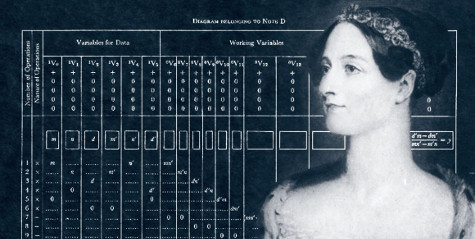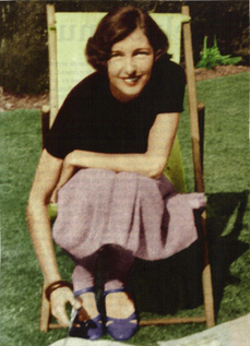Author’s Note:
When “CRIMINAL ELEMENT” asked me if I’d like to submit a piece on why I write women, I didn’t hesitate. In today’s world, in today’s social environment, it’s something that needs to be said. The article I submitted was just published. Please, dear friends — and especially you men out there — for the sake of all those wonderful and amazing women in our lives, share this far and wide.
It never fails.
I’m wrapping up a talk at a book-signing event.
A hand waves in the back row.
A woman stands.
“You’re a man,” she declares.
I smile. I’ve been here before.
“Uh … yeah … last time I looked.”
“But you write women.”
“Yes, I do.”
“Your main character is always a woman.”
“That’s right.”
“Why? Why do you write women?”
It’s a question I’m frequently asked—most recently in the margins of a literary awards ceremony in the Cayman Islands where Storm Rising took the top prize.
“Why do you write women?”
Let’s begin with a simple Q&A:
Question: “What is the key requirement of successful fiction?”
Right answer: “A good story, well told.”
Wrong answer: “A good story about a man, well told.”
Half the population on this planet is female. So, why do so many mystery novels, suspense novels, and thrillers feature male protagonists?
Maybe we should start with a glance at the world of non-fiction writing—specifically history. Anyone who spends any time in libraries and bookstores will be well aware that the history of human civilization has been written primarily by men. Even in the “enlightened” 21st century, that hasn’t changed.
Before I sat down to write this piece, I conducted a little experiment. I have eight full bookshelves in my home. They are populated mainly with works on Western history, most of them written in the last few decades. I chose one of those eight bookshelves and counted the number of books it holds.
124.
Then, I counted the number of those books that were written by women.
28.
Then, I counted the number of books written by women in which the focus of the work was a female figure or theme.
14.
(I also noticed that 8 of those 14 books were written by the same female historian.)
Then, I counted the number of books written by men in which the focus of the work was a female figure or theme.
0.
For centuries, the creation of the historical record has been a male domain. What has been the result?
Let us try a little test:
Charles Babbage.
Anyone familiar with the history of computer development knows that name. In the 1830s, Babbage designed the precursor to the modern computer. He called his machine an “analytical engine.”
via IQ Intel
I’m guessing very few of you reading this have ever heard of this woman.
Ada Lovelace was the only legitimate child of Lord Byron. She was also the mathematical genius who developed the algorithm for Babbage’s analytical engine to calculate a sequence of Bernoulli numbers—essential for its proper function. In effect, she created the first computer software in history. But it wasn’t until 1980 that anyone seemed to notice her accomplishment. It was then, 128 years after Ada’s death, that the United States Department of Defense named a computer language after her.
In May 2013, National Geographic published an article: “6 Women Scientists Who Were Snubbed Due to Sexism” (The article, by the way, was written by a woman.)
And those examples, dear friends, are just the tip of the iceberg.
“Okay,” I hear you saying. “We agree that human societies have a long history of ignoring the intellectual accomplishments of women. But you write fiction. And your heroines are not just smart, they can be kickass in a showdown. Where is the historical background for women like that?”
Seriously?
How about Krystyna Skarbek, one of Britain’s most decorated secret service agents of WWII? Krystyna was extremely intelligent and fluent in three languages. In 1944, while operating behind the lines in France, she single-handedly faced down a Gestapo prison commander, terrifying the Nazi into ordering the release of three captured British and French officers only two hours before their scheduled execution.
Oh … and by the way, Krystyna was Jewish.
Or, how about Iris Origo?
Iris was married to an Italian aristocrat. She lived on an estate in a valley in North-Central Italy, about halfway between Rome and Florence. She spent the entire Italian campaign risking her life protecting orphaned children, deserters from both the Italian and German armies, escaped Allied POW’s, and partisan fighters—anyone, in fact, who came to her door. She repeatedly faced down vicious Italian fascists and the German S.S. thugs, relying solely on her impressive intelligence and cool-headed nerve. Even while German troops were occupying her manor house, she was busy smuggling food to partisans and Allied POW’s hiding in the forests of her estate … and keeping a war diary that she buried in her garden every morning.
Her diary, War in Val d’Orcia, was published in 1947, and it is still in print. It should be on everyone’s reading list.
These women, and the thousands of courageous, intelligent women just like them who have lived in every epoch, are the models for my heroines.
Years ago, when I noticed that in commercial fiction—particularly in the mystery/suspense/thriller arena—women were being routinely assigned to the supporting roles, I asked myself: “Why is so much of this fiction devoted to hard-bitten male characters—cynical detectives trailing a string of divorces, or highly-trained killing machines?”
Why not a formidable woman? After all, she has an extra advantage: she’s unexpected.
We are culturally hard-wired to root for underdogs, and who makes a better underdog in a fight? Unless she’s some kind of mixed martial arts prodigy, a woman will be at a significant physical disadvantage in any confrontation. Here are some statistics to consider. According to the National Center for Health Statistics:
The average man is five inches taller than the average woman (5’9″ vs. 5’4″).
The average man is thirty pounds heavier (196 pounds vs. 166 pounds).
And, the average man has twice the upper-body strength and twice the grip strength.
In my book (yes, pun intended), a woman makes a terrific come-from-behind protagonist. I have really enjoyed creating women like Claire Talbot (Time of Departure), Lucy Hendricks (Storm Rising), and coming in November: Laura Pace.
A few years ago, I had an interesting reaction from an editor at a major publishing house. This editor was male. He had just read the manuscript of Time of Departure. He said he loved the novel, and he loved Claire, but he had one reservation: “I kept wondering whether a female protagonist written by a man would resonate with the audience.”
Daniela Rapp, my wise and all-knowing editor here at Macmillan, had a much different take on that question—and here we are today, getting ready for the November release of Killing Pace, my third novel with St. Martin’s Press.
This time, Daniela and I will be introducing Laura Pace.
We do hope you’ll join Laura for the ride.
***
Postscript: Referring to that editor’s comment about “resonating” with the audience, you should know that I occasionally receive messages from male fans who tell me they’ve fallen in love with one of my heroines. I have been asked, in all earnestness, if I modeled Claire or Lucy on a real person. If so, these guys insist, they want to meet her.
My answer, gentlemen, is NO WAY.
These ladies are mine … all mine.
_________________________________________________________
About the Author:
Douglas Schofield is the author of Time of Departure and Storm Rising. He was raised and educated in British Columbia, where he earned degrees in history and law. Over the past thirty years, he has worked as a lawyer in Canada, Bermuda, and the Cayman Islands. Douglas and his wife, Melody, live on Grand Cayman, along with their most excellent and amazing talking cat, Juno.




